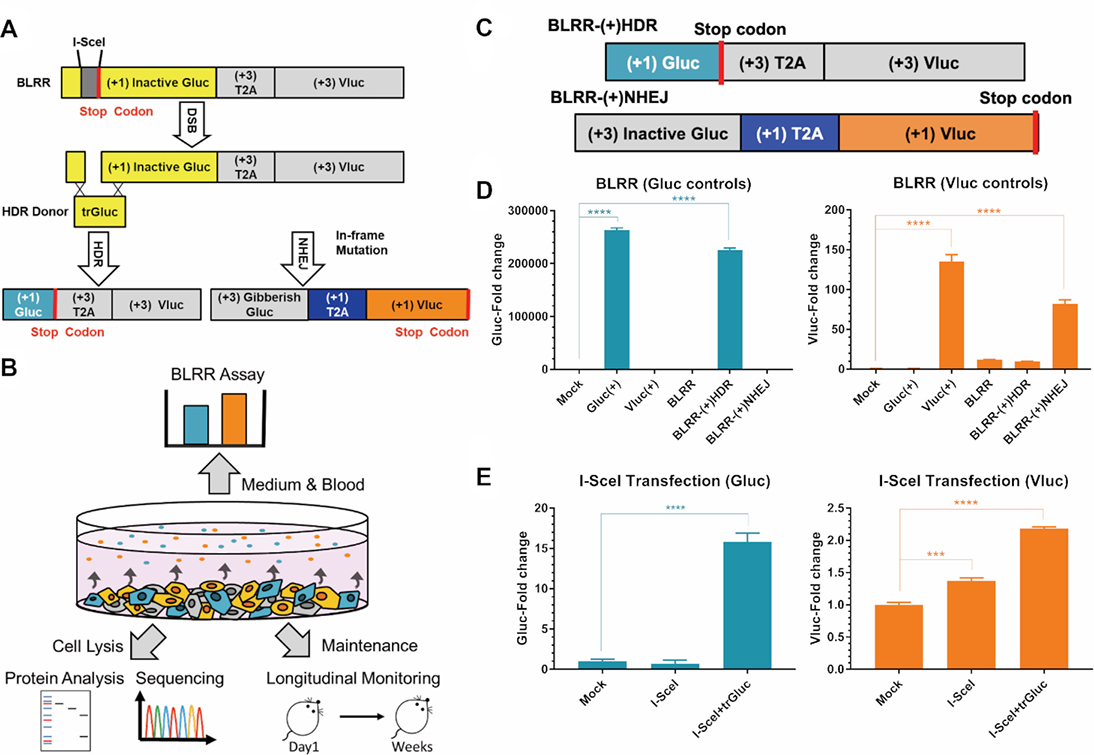
 中央研究院 生物化學研究所
中央研究院 生物化學研究所
Tracking DNA double strand break (DSB) repair is paramount for the understanding and therapeutic development of various diseases including cancers. Herein, we describe a multiplexed bioluminescent repair reporter (BLRR) for non-invasive monitoring of DSB repair pathways in living cells and animals. The BLRR approach employs secreted Gaussia and Vargula luciferases to simultaneously detect homology-directed repair (HDR) and non-homologous end joining (NHEJ), respectively. BLRR data are consistent with next-generation sequencing results for reporting HDR (R2 = 0.9722) and NHEJ (R2 = 0.919) events. Moreover, BLRR analysis allows longitudinal tracking of HDR and NHEJ activities in cells, and enables detection of DSB repairs in xenografted tumours in vivo. Using the BLRR system, we observed a significant difference in the efficiency of CRISPR/Cas9-mediated editing with guide RNAs only 1-10 bp apart. Moreover, BLRR analysis detected altered dynamics for DSB repair induced by small-molecule modulators. Finally, we discovered HDR-suppressing functions of anticancer cardiac glycosides in human glioblastomas and glioma cancer stem-like cells via inhibition of DNA repair protein RAD51 homolog 1 (RAD51). The BLRR method provides a highly sensitive platform to simultaneously and longitudinally track HDR and NHEJ dynamics that is sufficiently versatile for elucidating the physiology and therapeutic development of DSB repair.
